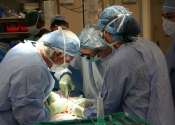Study finds noncoding RNAs dysregulated in several human cancers
Northwestern Medicine scientists have discovered new insights into the production and regulation of a class of noncoding RNAs and how alterations in their signatures diversify and modulate the transcriptome of three major ...
Aug 5, 2024
0
10









